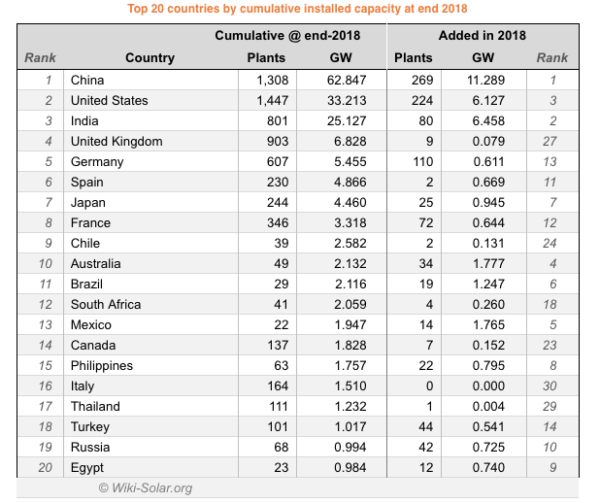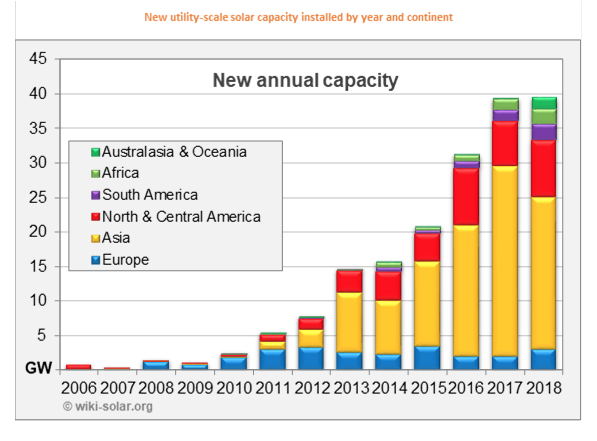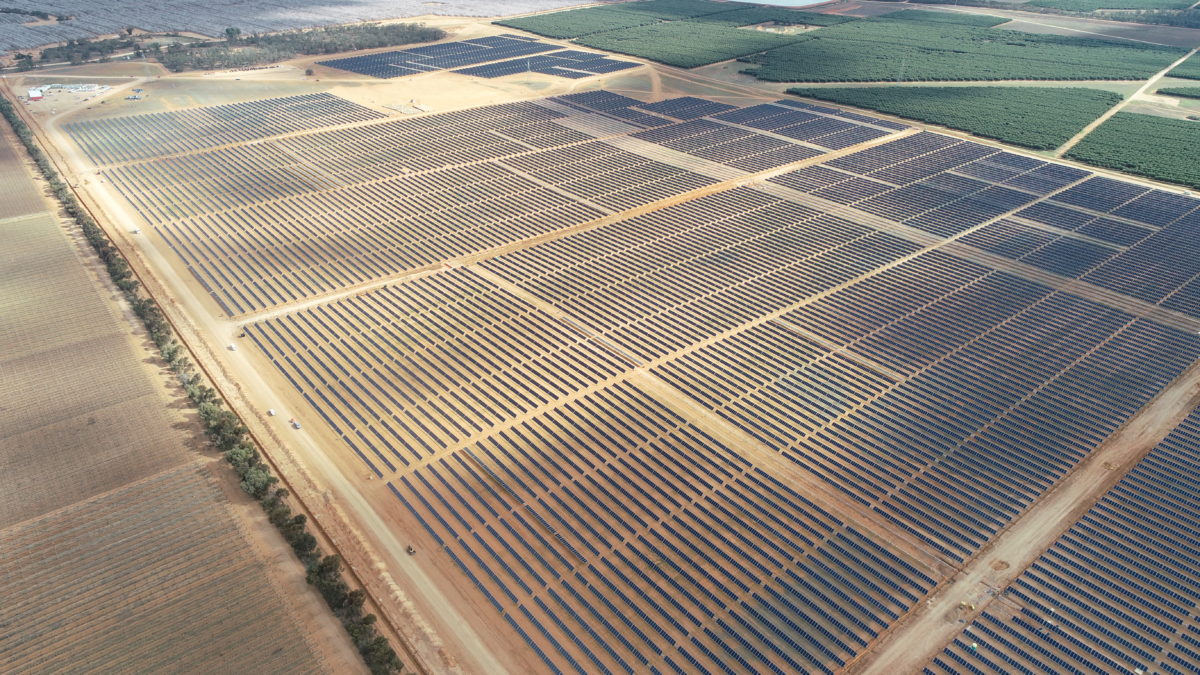Utility-scale solar generating capacity grew by almost 40 GW in 2018, reaching a total of 180 GW by year end, according to figures released today by Wiki-Solar, a U.K.-based compiler of utility-scale solar deployment data. While growth slowed down in the leading markets, the shortfall was made up by accelerating deployment in nations lower down the table, with Australia to the fore.
With central subsidies cut back in China under the government’s 5/31 New Policy announcement leading to an 18% fall in new PV capacity last year, the Trump Administration’s Section 201 tariffs taking a bite out of the U.S. market, and India affected by delayed and cancelled tenders, the utility-scale solar market was in for a slowdown. However, according to Wiki-Solar, the 2018 installation figures managed to match the record set in the previous year.
This was achieved thanks to the contribution of the rising utility-scale solar PV markets, led by Australia, Mexico and Brazil. The role of Australia is particularly highlighted as the only newcomer to the the top 10 nations. “Australia roughly quadrupled its installed capacity in 2018. Just four years ago, the country barely scraped into the top 30,” Wiki-Solar says.

The global utility-scale installation figures may vary, depending on the source. For instance, Wiki-Solar finds China added over 11 GW in 2018, while the data from the China Photovoltaic Industry Association (CPIA) indicate there was still 20 GW of large-scale, ground-mounted PV installed after the policy u-turn, after only 3.6 GW had been installed in the opening five months of the western calendar year.
But, the 2018 utility-scale solar boom in Australia is beyond any doubt. According to the figures released by Australia’s leading number crunchers Green Energy Markets, utility scale solar increased 300% – passing the 1,000 GWh milestone for the first time. A dataset compiled by Green Energy Trading showed there was 2,083 MW of big PV added last year, around half of it in Queensland, up from a meager 119 MW in 2017.

This content is protected by copyright and may not be reused. If you want to cooperate with us and would like to reuse some of our content, please contact: editors@pv-magazine.com.









By submitting this form you agree to pv magazine using your data for the purposes of publishing your comment.
Your personal data will only be disclosed or otherwise transmitted to third parties for the purposes of spam filtering or if this is necessary for technical maintenance of the website. Any other transfer to third parties will not take place unless this is justified on the basis of applicable data protection regulations or if pv magazine is legally obliged to do so.
You may revoke this consent at any time with effect for the future, in which case your personal data will be deleted immediately. Otherwise, your data will be deleted if pv magazine has processed your request or the purpose of data storage is fulfilled.
Further information on data privacy can be found in our Data Protection Policy.